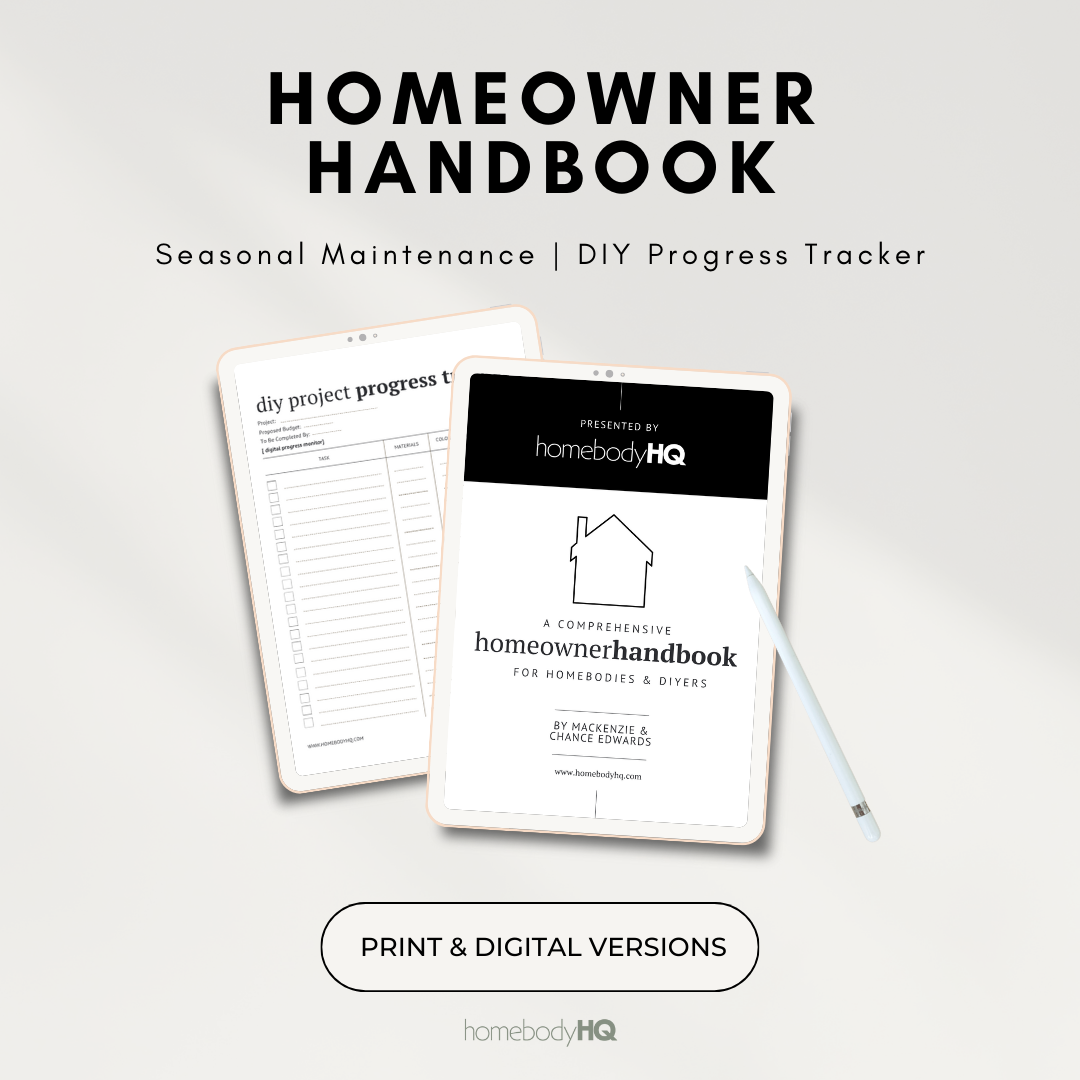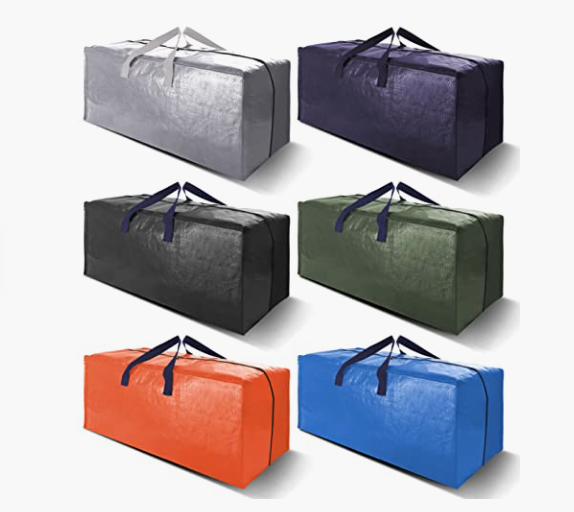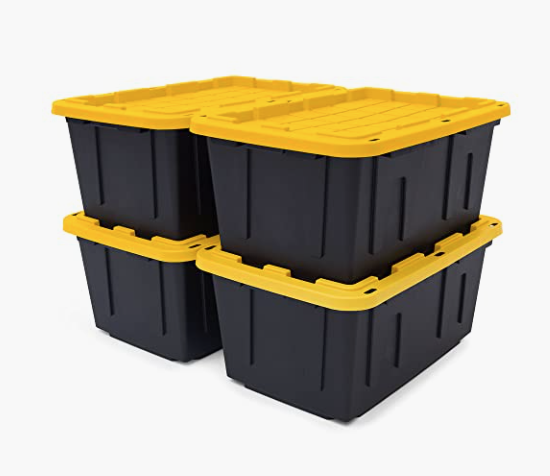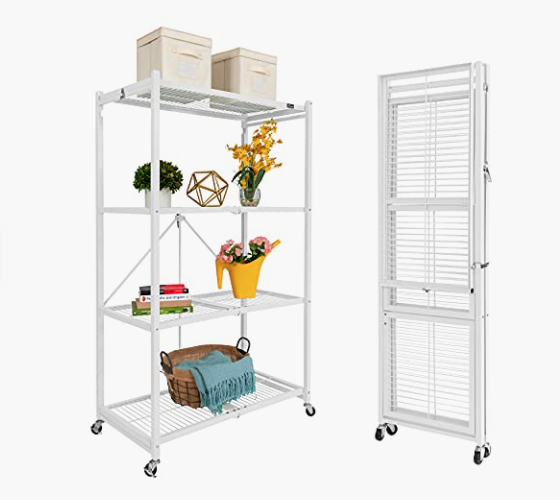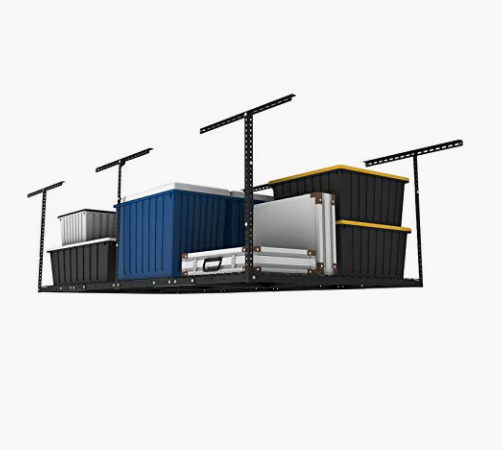Tips for Transforming Your Garage or Shed into an Organized Haven
As the winter chill gives way to the warmth of spring, it's the perfect time to embark on the age-old tradition of spring cleaning. One area that often gets neglected is the garage or shed – those catch-all spaces where we store everything from gardening tools to holiday decorations. In this comprehensive guide, we'll explore the essential steps to revitalize your garage or shed, discuss what's safe to store in non-temperature-controlled spaces and offer practical organization tips to make the most of limited space.
Declutter and Assess:
Before diving into the cleaning process, it's crucial to declutter and assess the items in your garage or shed. Empty the space, sorting items into categories such as keep, donate, and discard. This initial step helps create a clean slate and allows you to evaluate what truly belongs in your storage area.
Safety First - What to Store in Non-Temperature-Controlled Spaces:
Garages and sheds are often not temperature-controlled, making it imperative to choose items that can withstand fluctuating temperatures. Here are some items that are generally safe to store in such spaces:
1. Gardening Tools: Rakes, shovels, and gardening gloves are typically made of durable materials that can withstand temperature variations.
2. Outdoor Furniture: Most outdoor furniture, such as plastic or metal chairs and tables, can endure exposure to temperature changes without significant damage.
3. Sports Equipment: Items like bicycles, golf clubs, and camping gear are usually resilient to temperature fluctuations.
4. Holiday Decorations: Decorative items like artificial Christmas trees, wreaths, and lights are generally safe for garage storage.
Avoid storing sensitive items like electronics, important documents, or perishable items in non-temperature-controlled spaces, as they may be damaged by extreme heat or cold.
What NOT to Store In Your Non-Temperature-Controlled Garage:
Photographs and Artwork:
Photographs, paintings, and other artwork are susceptible to damage from temperature and humidity fluctuations. Mold growth, warping, and fading can occur when these items are exposed to an uncontrolled environment.
Vinyl Records and CDs:
Vinyl records and CDs can warp and degrade in extreme temperatures. The heat can cause the records to warp, affecting playback quality, while the cold can make CDs more brittle and prone to cracking.
Electronics
Electronic devices, including computers, televisions, and audio equipment, are sensitive to temperature extremes. Heat or cold can cause electronic components to degrade, leading to malfunctions or permanent damage.
Important Documents:
Legal documents, certificates, and sensitive papers can deteriorate in fluctuating temperatures. Humidity can cause mold or mildew growth, and extreme temperatures may lead to discoloration, brittleness, or deterioration of the paper.
Leather Goods:
Leather items such as furniture, clothing, and accessories can crack and become brittle when exposed to prolonged heat or cold. Humidity can also lead to mold growth on leather surfaces.
Canned Foods:
While many non-perishable foods have a long shelf life, extreme temperatures can affect the quality of canned goods. High temperatures can lead to spoilage or changes in taste and texture.
Appliances with Water Components:
Appliances that contain water components, such as washing machines, dishwashers, or refrigerators, should not be stored in non-temperature-controlled spaces. Freezing temperatures can cause water in the components to expand, leading to damage.
Flammable or Combustible Materials:
Avoid storing flammable substances like gasoline, propane tanks, or paint thinner in uncontrolled environments. Extreme temperatures can increase the risk of leaks, explosions, or combustion.
Medications:
Pharmaceuticals and over-the-counter medications can lose their efficacy when exposed to extreme temperatures. Always store medications in a cool, dry place, as heat can cause chemical changes that may render them ineffective or even harmful.
Household Cleaning Products:
Some cleaning products, especially those containing volatile or hazardous chemicals, may pose safety risks if exposed to extreme temperatures. Always follow manufacturer guidelines for storage conditions.
Wine and Liquor:
Wine and liquor can be adversely affected by temperature variations. Extreme heat can cause wine to age prematurely, and fluctuating temperatures can impact the flavor and quality of spirits.
Sensitive Fabrics and Clothing:
Delicate fabrics, such as silk or fur, and clothing items with sensitive dyes can be damaged by extreme temperatures. Humidity can also contribute to mold growth on fabrics.
Keep Your DIY Materials Safe
While the garage may seem like a convenient place to store various DIY project materials, not everything is well-suited for non-temperature-controlled environments, and paint is a prime example. Storing paint in your garage without proper climate regulation can lead to several issues that compromise its quality and usability. Here's why you should avoid keeping paint in your non-temperature-controlled garage:
1. Temperature Extremes: Paint is sensitive to temperature extremes, especially excessive heat or cold. In a non-temperature-controlled garage, temperatures can soar during the summer and plummet during the winter. These fluctuations can cause the paint to degrade, leading to changes in consistency and color.
2. Freezing and Thawing: If paint is exposed to freezing temperatures, the water-based components within it can freeze. This can result in a separation of the paint's components, leading to a gritty or lumpy texture. Thawing and subsequent re-freezing can further exacerbate these issues, rendering the paint unusable.
3. Reduced Shelf Life: Paint manufacturers carefully formulate their products to maintain stability under specific conditions. Storing paint in a non-temperature-controlled environment accelerates the aging process, causing it to lose its effectiveness more quickly. This can result in clumping, curdling, or a color change that may affect the paint's performance when applied.
4. Increased Evaporation: High temperatures can lead to increased evaporation of the volatile solvents in paint. This evaporation can result in the paint becoming thicker and more challenging to apply. Additionally, the loss of solvents may affect the paint's ability to adhere properly to surfaces.
5. Metal Can Corrosion: Many paints come in metal cans, and exposure to extreme temperatures can cause these containers to corrode. Corrosion may compromise the integrity of the can, leading to leaks or contamination of the paint inside.
6. Mold and Mildew Growth: Fluctuating temperatures and humidity levels in a non-temperature-controlled garage create an environment conducive to mold and mildew growth. These contaminants can compromise the quality of the paint and make it unsafe to use.
To preserve the quality and longevity of your paint, it's advisable to store it in a controlled indoor environment, such as a utility room or basement, where temperatures are relatively stable. If storing in a garage is unavoidable, consider investing in temperature-controlled storage solutions, such as insulated cabinets, to shield your paint from the harsh effects of weather extremes, or utilizing a de-humidifier that keeps the space at a consistent temperature. By taking these precautions, you can ensure that your paint remains in optimal condition, ready for use whenever your next home improvement project arises.
Deep Cleaning:
Once the space is decluttered, it's time for a deep clean. Sweep the floors, dust surfaces, and wipe down shelves. For stubborn stains, consider using a pressure washer for garage floors or a mild detergent for shed surfaces. Address any pest issues promptly, as pests can be attracted to the stored items and wreak havoc on your belongings.
Organization Tips for Small Spaces:
Now that your space is clean, it's time to make the most of the available square footage. Here are some organization tips and hacks for optimizing small spaces:
1. Vertical Storage: Utilize wall space by installing shelves or pegboards. This not only keeps items off the floor but also makes them easily accessible.
2. Clear Storage Bins: Invest in transparent storage bins to easily identify the contents without having to open each one. Label the bins for further convenience.
3. Ceiling Hooks and Racks: Install hooks or racks on the ceiling to store items like bicycles, ladders, or even seasonal decorations. This makes use of overhead space and keeps the floor clutter-free.
4. Pegboards for Tools: Arrange your gardening tools on a pegboard for easy access and a visually pleasing display. Outline the tools' shapes to ensure everything is returned to its designated spot.
5. Zone Your Space: Create zones within the garage or shed for different purposes. For example, designate one area for gardening tools, another for sports equipment, and a third for seasonal decorations. This helps maintain order and makes finding items more straightforward.
6. Furniture with Built-in Storage: If space allows, consider incorporating benches or cabinets with built-in storage. This provides a dual purpose – seating and storage – without taking up additional space.
Keeping Critters Out of Your Garage/Shed
Maintaining a clean and organized garage or shed isn't just about aesthetics – it's also crucial for preventing unwanted critters from making themselves at home in your storage space. Insects, rodents, and other pests are drawn to clutter, food sources, and cozy nesting spots. Here are effective strategies to keep critters at bay and protect your garage or shed:
1. Regular Cleaning and Decluttering:
Pests love hiding in cluttered spaces, so make it a habit to regularly declutter your garage or shed.
Sweep the floors, clean spills promptly, and remove any debris that might serve as a potential nesting ground.
2. Seal Entry Points:
Inspect your garage or shed for any cracks, gaps, or holes in the walls, windows, and doors.
Seal these entry points with weather stripping, caulk, or other appropriate materials to prevent pests from finding their way inside.
3. Secure Food Sources:
If you store pet food, birdseed, or other edible items in your garage, ensure they are stored in airtight containers.
Regularly clean up any spilled food and dispose of garbage promptly, as lingering odors can attract pests.
4. Use Pest Deterrents:
Consider using natural pest deterrents like peppermint oil, citrus peels, or vinegar, as these can help repel insects and rodents.
Place mothballs or cedar blocks strategically in corners to deter spiders and moths.
5. Elevate Storage:
Store items off the ground whenever possible. Elevating storage can make it more challenging for rodents to create nests, and it reduces hiding spots for insects.
Utilize shelves or hanging racks to keep belongings organized and less accessible to pests.
6. Install Screens:
Ensure that windows and vents are equipped with screens to prevent insects and small animals from entering.
Regularly inspect screens for tears or damage and repair or replace them as needed.
7. Regular Pest Inspections:
Schedule regular pest inspections to identify and address potential infestations before they become major problems.
If you notice signs of pests, such as droppings or chewed materials, take immediate action to eliminate the issue.
8. Natural Predators:
Encourage natural predators like cats or certain bird species to inhabit the vicinity. Their presence can deter smaller pests from taking residence in your garage or shed.
9. Secure Trash Bins:
Ensure that outdoor trash bins are tightly sealed. Pests are attracted to food waste, so securing your garbage can help prevent them from approaching your storage space.
10. Professional Pest Control:
If your efforts to keep critters at bay prove unsuccessful, consider hiring professional pest control services. They can assess the situation and implement effective solutions tailored to your specific pest problems.
By implementing these preventative measures and staying vigilant, you can create a garage or shed that is uninviting to pests. A clean and well-maintained storage space not only protects your belongings but also provides you with a clutter-free environment that's welcoming for you and unwelcoming for unwanted critters.
Spring cleaning your garage or shed can be a fulfilling and transformative experience. By decluttering, cleaning, and organizing strategically, you'll create a functional space that serves your needs efficiently. Remember to prioritize safety when deciding what to store in non-temperature-controlled spaces, and implement creative organization hacks to maximize the potential of even the smallest storage areas. With a well-organized garage or shed, you'll be ready to tackle the upcoming seasons with ease and enjoy the benefits of a clutter-free space.



